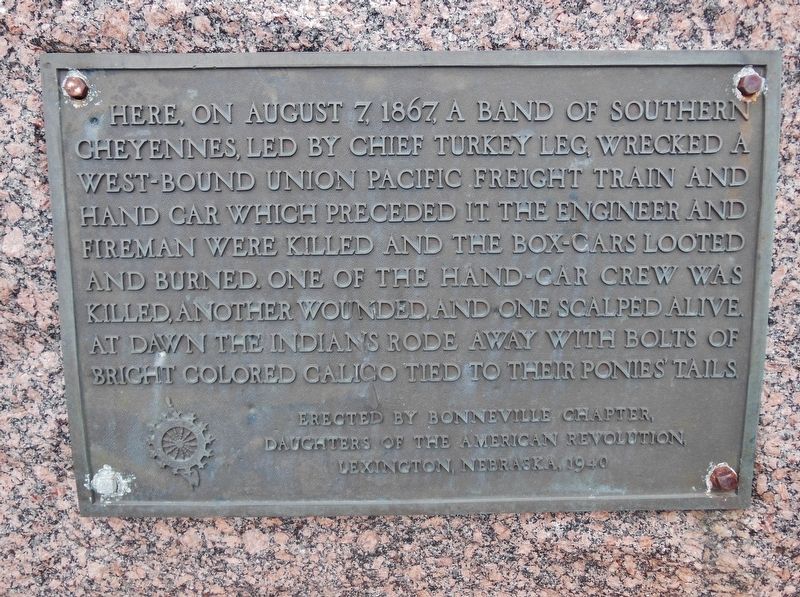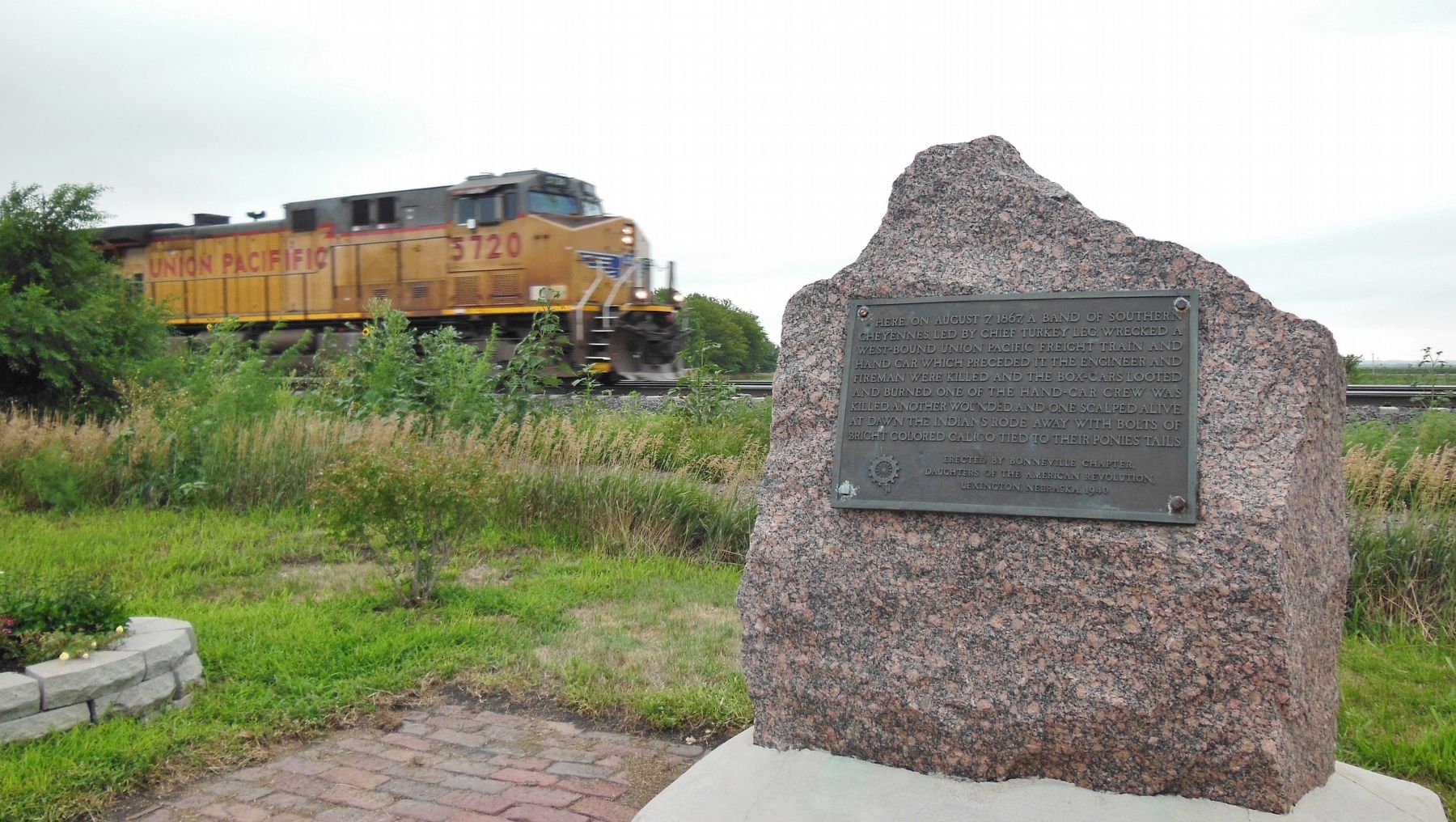Lexington in Dawson County, Nebraska — The American Midwest (Upper Plains)
Plum Creek Railroad Attack
Here, on August 7, 1867, a band of Southern Cheyennes, led by Chief Turkey Leg, wrecked a west-bound Union Pacific freight train and handcar which preceded it. The engineer and fireman were killed and the boxcars looted and burned. One of the handcar crew was killed, another wounded, and one scalped alive. At dawn the Indians rode away with bolts of bright colored calico tied to their ponies’ tails.
Erected 1940 by Bonneville Charter, Daughters of the American Revolution.
Topics and series. This historical marker is listed in these topic lists: Native Americans • Railroads & Streetcars • Settlements & Settlers. In addition, it is included in the Daughters of the American Revolution, and the Transcontinental Railroad series lists. A significant historical date for this entry is August 7, 1867.
Location. 40° 47.441′ N, 99° 48.487′ W. Marker is in Lexington, Nebraska, in Dawson County. Marker is on U.S. 30, 0.1 miles west of Road 430, on the right when traveling east. Marker is located in a pullout on the south side of U.S. 30, just a few yards from the Union Pacific railroad tracks. Touch for map. Marker is in this post office area: Lexington NE 68850, United States of America. Touch for directions.
Other nearby markers. At least 8 other markers are within 15 miles of this marker, measured as the crow flies. M2 Bradley Fighting Vehicle (approx. 5 miles away); M60A1 Main Battle Tank (approx. 5 miles away); Central Platte Valley (approx. 5.1 miles away); a different marker also named Central Platte Valley (approx. 5.8 miles away); The 100th Meridian (approx. 10.3 miles away); Plum Creek Massacre Site (approx. 13.4 miles away); The Plum Creek Massacre (approx. 13.4 miles away); Gosper County World War II Memorial (approx. 14.3 miles away). Touch for a list and map of all markers in Lexington.
Also see . . . Plum Creek Railroad Attack - 1867.
The wrecking was done by the Indians shortly after dark, about nine o'clock. The section men had been working at that point during the day and had left their tools alongside the track. The Indians being on the lookout and watching them from the islands in the Platte river, took the tools, pulled out the spikes and raised the rails to a height of three or four feet. They then took down the telegraph wires and fastened blocks of wood to each rail. As there was only one wire used for telegraph, the agent discovered at once that he could not send or receive messages and he ordered the section men to go and find the trouble. So brother Jim and six men, Tim Murphy, Pat Handerhand, John Kearn, Thompson, Wallace, and Pat Griswold,
went out on the hand car to find the trouble and the first they noticed was a fire built along the north side of the track and the Indians were hiding on the south side in some tall grass. The hand car hit the blocks of wood which the Indians tied to the rails and jumped the track. About this time forty Indians on ponies appeared and started yelling and shooting arrows and guns at the section men, who were armed and who returned the fire. The Indians kept riding in a circle around the men, who realized that they were in a bad fix and when the chance came they made break to get away and in doing so the first man captured was Pat Handerhand. The Indians took their tomahawks and cut him to pieces. The next man they got was Thompson. They scalped him. (Submitted on March 9, 2017, by Cosmos Mariner of Cape Canaveral, Florida.)
Credits. This page was last revised on August 27, 2018. It was originally submitted on March 9, 2017, by Cosmos Mariner of Cape Canaveral, Florida. This page has been viewed 1,840 times since then and 127 times this year. Last updated on July 29, 2018, by Thomas Dorman of Laurel, Maryland. Photos: 1, 2. submitted on March 9, 2017, by Cosmos Mariner of Cape Canaveral, Florida. • Andrew Ruppenstein was the editor who published this page.

